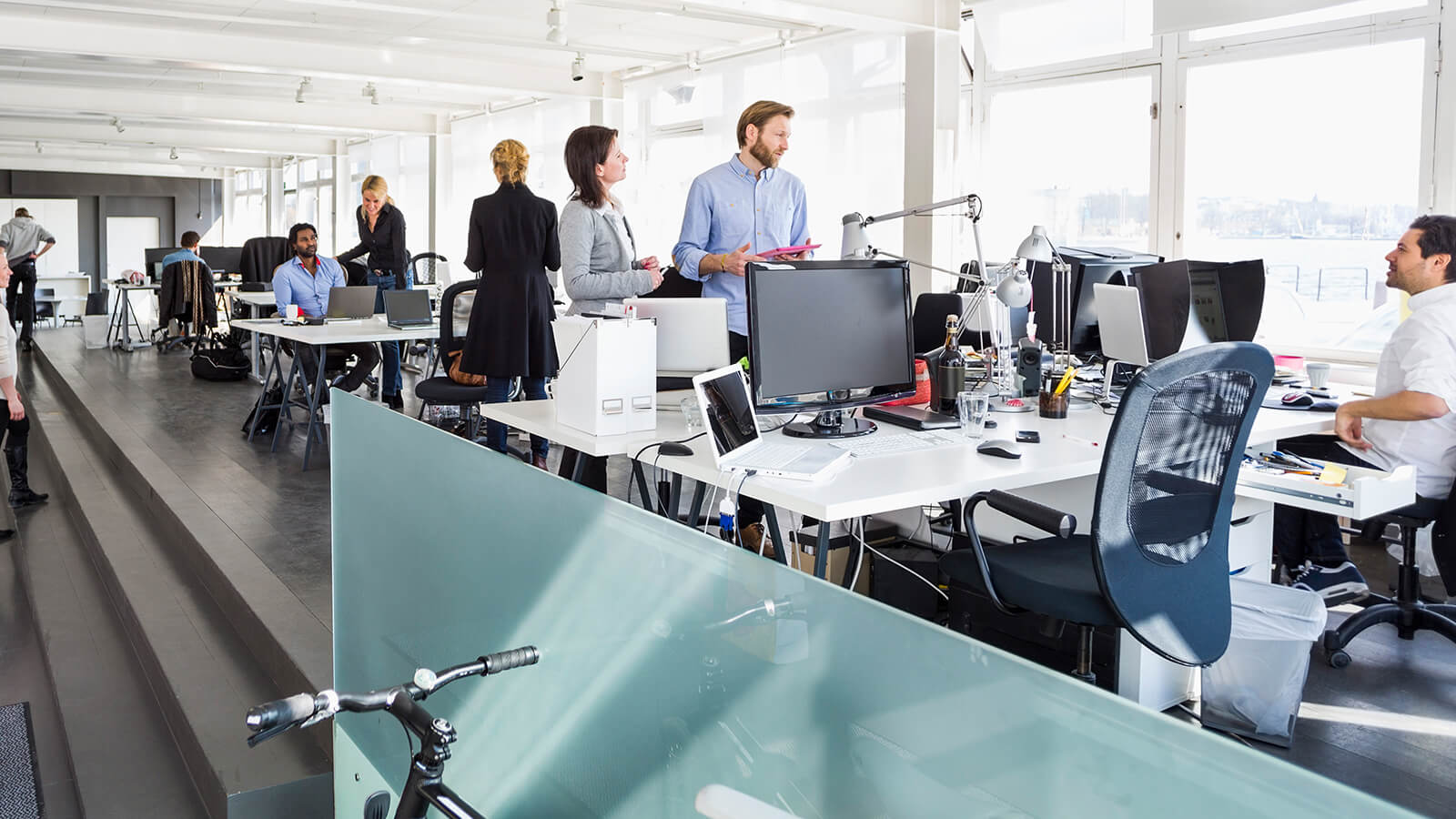
Although working-from-home will still rule the roost for many, the step-down to Level 3 pandemic status sees non-essential New Zealand businesses begin to at least contemplate a return to the workplace.
However, this glimmer of hope will always be tempered by the implications of our new daily normal, and raises countless questions about just how that might work. ‘All changed, changed utterly’, as a certain Irish poet might have said.
One of the many working practices that will come under even further scrutiny is hot desking. For anyone not familiar with the concept, hot desking (also known as ‘location independent working’) is used in open plan offices where employees often outnumber desks. As opposed to workers having their own desk, seating is assigned daily on a ‘first in, first served’ basis, with desks either housing computers or optimised as ‘touchdown’ spaces for laptops.
Pros and cons
In recent years, hot desking has become a common practice in offices across New Zealand (and the world), with plenty of arguments for and against. Proponents of hot desking cite a more cost-effective and flexible way of working, one that flattens standard workplace hierarchy and encourages a more collaborative culture. A neater office too, as people feel obliged to keep desks tidy for the next user1.
The naysayers on the other hand – of which there are many - suggest that hot desking means employees can feel undervalued without a permanent ‘home’. And that’s not to mention making meetings harder to organise, workers feeling more isolated away from their team, or even making it nigh on impossible to locate the people you really need to talk to during the working day. In other words, one size definitely does not fit all2.
Yes, the jury is still out on hot desking, but now there’s an added complication in the mix. In the future, as our alert level continues to decrease and workers return to their hot desk office, how will it even work?
You know the drill
Regardless of where you stand (or sit) on hot desking, the last few weeks and months have seen public safety messages drilled into everyone on a daily basis. Wash your hands regularly using soap for at least 20 seconds to kill the virus. Use hand sanitiser wherever possible. Cover your mouth with your elbow when you cough or sneeze to prevent spreading infection. And more pertinently, keep communal surfaces disinfected regularly and practice social distancing by standing at least 2 metres away from anyone not in your bubble3.
The trouble is, of course, that returning to a shared workplace will make these by now ingrained rules hard enough to follow in a traditional office, let alone in a hot desk environment. After all, it’s difficult to avoid close contact when you’re sitting next to people, and you can’t personally clean every surface and item as you move around the office. Which in turn begs the question, will your staff feel safe? And will they actually be safe?
With this in mind, we’ve put together some basic pointers to help you get ready for the return to ‘business as unusual’:
1. Be prepared for the worst
Hopefully it will never happen, but If someone in your workplace were to get sick with Covid-19, the level of equipment and cleaning required to sanitize every space is serious. You’ll need:
- PPE gear – that means gowns, masks, protective eyewear and gloves.
- Antiviral detergents or disinfectants to clean every surface, top to bottom. Those containing hypochlorite (the main active ingredient in bleach) or activated hydrogen peroxide are best. Ethanol or isopropyl alcohol can also work, if strong enough. Remember, surfaces will need around 10 seconds soaking for the disinfectant to work.
- Cleaning equipment – plenty of disposable cloths, mops and anything else you use to clean up4,5
For a comprehensive cleaning guide and information on PPE gear please visit the Ministry of Health and/or the covid19.govt.nz website(s).
2. Talk to your cleaning company
If you employ your office cleaners directly, you’ll need to consider the equipment and cleaning products they’ll need in this new era. Or if your cleaners are on contract through an agency or company, talk to them about their plans and ability to deal with the new requirements. Better now than later.
3. Make a plan – now
Putting new systems, process and equipment in place takes time, especially given the restrictions and increased demands for some of the products you’ll need. Waiting until staff are back in the office is too late, so do it now.
Hot desking or not, getting back to workplace ‘normal’ depends on you and all your employees staying safe and well, so that you can all get on with your jobs. And given the inevitable economic downturn that Covid-19 brings for many businesses, it could even be the difference between survival – or not.
References:
- D Webster, “The Pros and Cons of Hot Desking” LinkedIn [website], 10 May 2017, https://www.linkedin.com/pulse/pros-cons-hot-desking-david-webster/, accessed 1 May 2020
- S Constable, “How Hot-Desking Will Kill Your Company” Forbes [website], 20 June 2019, https://www.forbes.com/sites/simonconstable/2019/06/20/how-hot-desking-will-kill-your-company/#4090cf0d32e9, accessed 1 May 2020
- Covid19.govt.nz, “How were uniting” covid19.govt.nz [website], [no date], https://covid19.govt.nz/covid-19/how-were-uniting/, accessed 1 May 2020
- Dr S Wiles, “How to get rid of Covid-19 from surfaces the right way” The Spinoff [website], 7 March 2020, https://thespinoff.co.nz/science/07-03-2020/how-to-get-rid-of-covid-19-from-surfaces-the-right-way/, accessed 1 May 2020
- Ministry of Health, “General cleaning information following a suspected, probable or confirmed case of COVID-19” Ministry of Health [website], 21 April 2020, https://www.health.govt.nz/our-work/diseases-and-conditions/covid-19-novel-coronavirus/covid-19-novel-coronavirus-information-specific-audiences/general-cleaning-information-following-suspected-probable-or-confirmed-case-covid-19, accessed 1 May 2020
